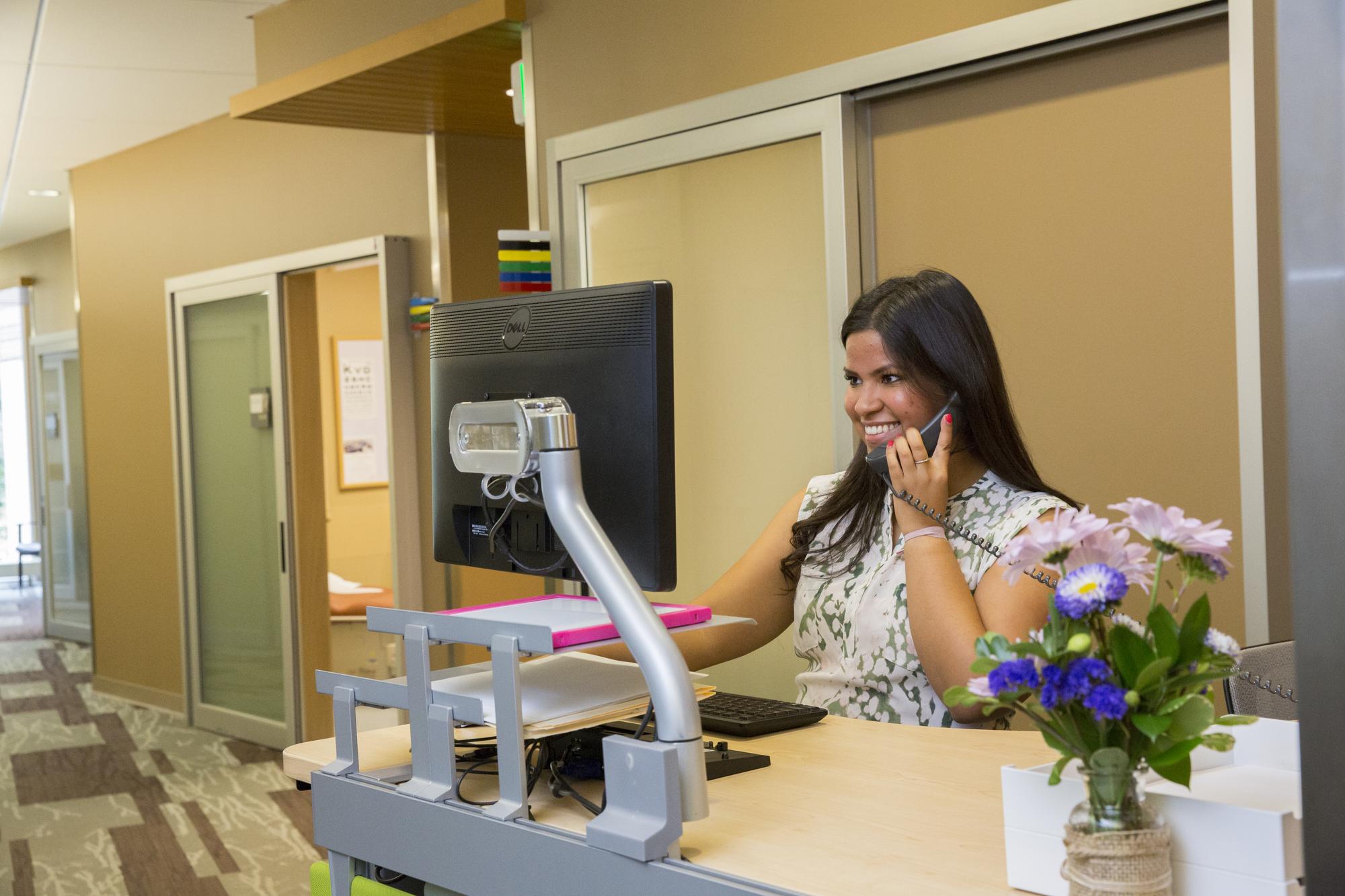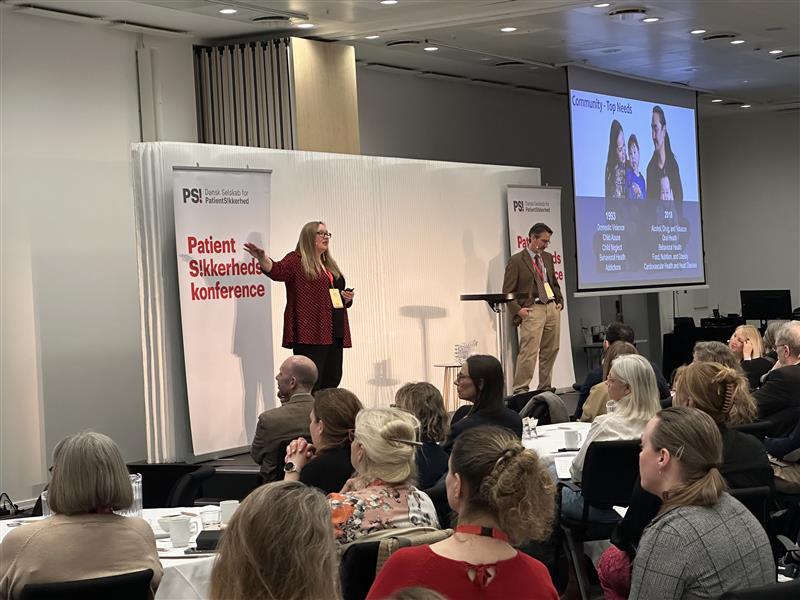
Encounter Optimization at Southcentral Foundation
With health care organizations under increasing pressure to reduce costs, one area that is worth examination is scheduling and logistics. Ensuring that appointments are handled as efficiently as possible can result in cost savings to an organization. However, time spent by the workforce is not the only thing that should be considered; customer-owner time is equally important as workforce time. With that in mind, Southcentral Foundation is pursuing a new strategy for scheduling that seeks to balance convenience for the customer-owner with efficiency and cost: encounter optimization.
Previously, SCF would practice “max-packing,” a system where if a customer-owner needed multiple things from the system, SCF would try to fit them all in when a provider appointment happened. This would be efficient for SCF, but it had the potential to create long appointments for the customer-owner, and could also put time pressure on the workforce. Encounter optimization takes a different approach, where SCF looks at each customer-owner need and determines the optimal approach to address each one.
For example, consider a scenario where a customer-owner needs labs, a blood pressure check, and an injection to manage their condition. All of these items are relatively straightforward and can be handled by a CMA, and in fact the CMA would likely be the person who did them even during a provider encounter. In a case like this, SCF has determined that there is no need for the customer-owner to see the provider; that appointment would require time from the provider as well as additional time from the customer-owner.
Instead, SCF creates a separate schedule where the customer-owner comes in to see the CMA. The items the customer-owner needs (described above) are outlined by the customer-owner’s case manager and signed off on by their provider. The CMA handles the labs, the blood pressure check, and the injection. This is a faster encounter and does not use up provider time. SCF can then call the customer-owner with the lab results and let them know if anything else needs to be done.
This process saves time, money, is more convenient for the customer-owner, and it preserves access for provider appointments. And it still allows for SCF’s versatile Integrated Care Teams to bring in multiple providers and specialists when it is needed. By practicing encounter optimization, SCF is working to make the encounters customer-owners do have more timely, optimized, and efficient.
Interested in finding out more about SCF’s powerful and versatile system of integrated primary care? Sign up for the Nuka Conference now! The conference features sessions from SCF’s subject matter experts on integrated care teams, integrated behavioral health, workforce development, improvement and innovation, trauma-informed care, and much more. If you have any questions about the conference, or SCF’s Nuka System of Care, feel free to contact the SCF Learning Institute.
Latest news
Archives
- January 2017 (4)
- February 2017 (4)
- April 2017 (4)
- August 2017 (4)
- October 2017 (4)
- June 2017 (3)
- July 2017 (3)
- September 2017 (3)
- December 2017 (3)
- March 2018 (3)
- July 2018 (3)
- March 2019 (3)
- May 2020 (3)
- March 2024 (3)
- March 2017 (2)
- May 2017 (2)
- November 2017 (2)
- April 2018 (2)
- May 2018 (2)
- June 2018 (2)
- August 2018 (2)
- September 2018 (2)
- October 2018 (2)
- November 2018 (2)
- April 2019 (2)
- May 2019 (2)
- August 2019 (2)
- September 2019 (2)
- March 2020 (2)
- April 2020 (2)
- June 2020 (2)
- July 2020 (2)
- August 2020 (2)
- September 2020 (2)
- October 2020 (2)
- March 2021 (2)
- May 2021 (2)
- June 2021 (2)
- September 2021 (2)
- November 2021 (2)
- March 2022 (2)
- May 2022 (2)
- August 2022 (2)
- October 2022 (2)
- April 2023 (2)
- May 2023 (2)
- June 2023 (2)
- October 2023 (2)
- December 2023 (2)
- August 2024 (2)
- November 2024 (2)
- January 2025 (2)
- February 2025 (2)
- April 2025 (2)
- January 2018 (1)
- February 2018 (1)
- December 2018 (1)
- January 2019 (1)
- February 2019 (1)
- June 2019 (1)
- July 2019 (1)
- November 2019 (1)
- December 2019 (1)
- January 2020 (1)
- February 2020 (1)
- November 2020 (1)
- December 2020 (1)
- January 2021 (1)
- April 2021 (1)
- July 2021 (1)
- August 2021 (1)
- December 2021 (1)
- January 2022 (1)
- February 2022 (1)
- April 2022 (1)
- June 2022 (1)
- July 2022 (1)
- December 2022 (1)
- January 2023 (1)
- March 2023 (1)
- July 2023 (1)
- August 2023 (1)
- September 2023 (1)
- November 2023 (1)
- April 2024 (1)
- June 2024 (1)
- July 2024 (1)
- September 2024 (1)
- December 2024 (1)
- March 2025 (1)
TAGS
- Nuka System of Care
- Southcentral Foundation
- Baldrige Award
- Baldrige Program
- Customer-Owner
- Community Clerkship
- Data
- Evaluation
- Human Resources
- National Indian Health Board
- National Tribal Health Conference
- Nuka
- Nuka System of Care Conference
- Quest for Excellence
- Relationship-based Care
- Traditional Healing

 Reducing Harm with Predictive Modeling and Impact Analysis
Reducing Harm with Predictive Modeling and Impact Analysis
Southcentral Foundation’s Nuka Learning Institute
4085 Tudor Centre Drive
Anchorage, Alaska 99508
For information about consulting and events, please contact (907) 729-NUKA (6852) or SCFNukaEvent@scf.cc
For information about student opportunities, please visit www.scfnuka.com/opportunities/students/ or call (907) 729-6800.
Southcentral Foundation
For information about Southcentral Foundation’s health and wellness programs and services, please visit
www.southcentralfoundation.com or call (907) 729-4955

Copyright © 2025 Southcentral Foundation



